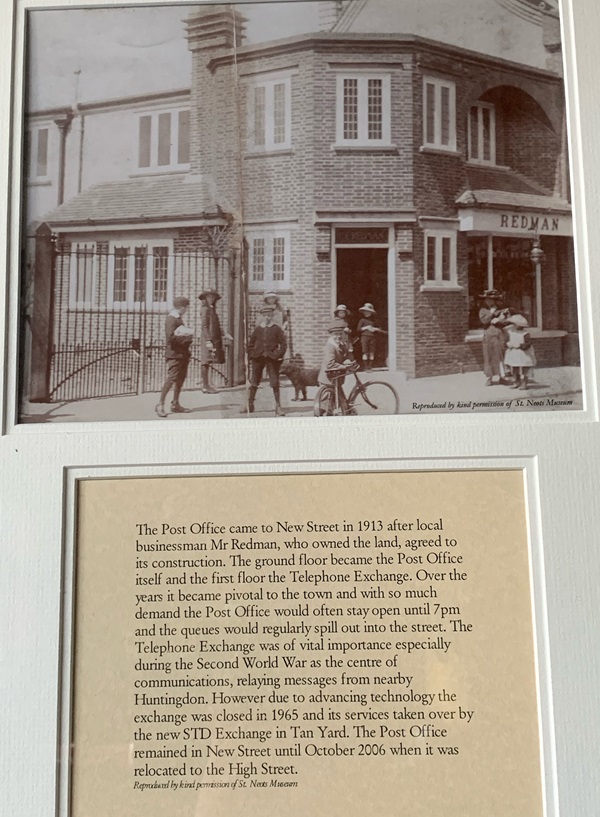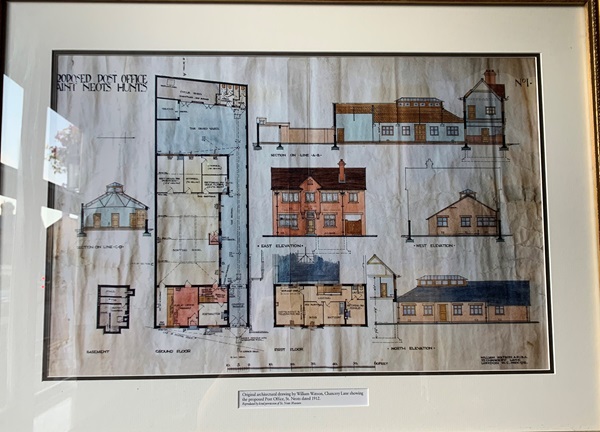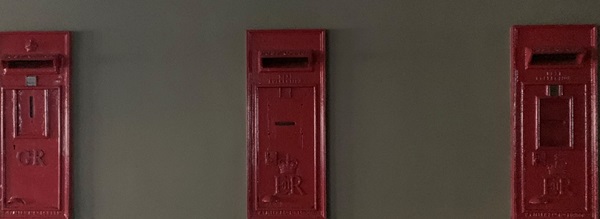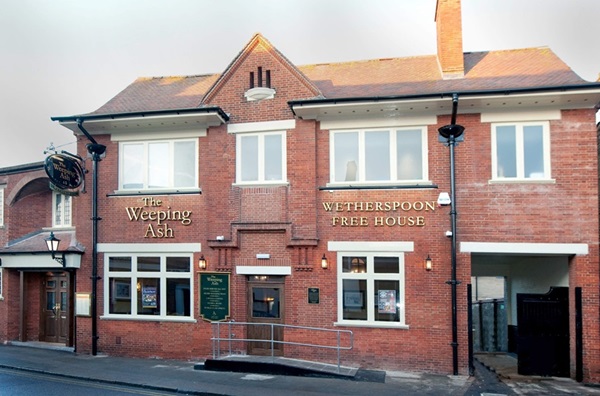15 New Street, St Neots, Cambridgeshire, PE19 1AE
This former post office stands on part of what was once a much-admired Victorian garden belonging to the house across the road – the home of William Medland, an important man in St Neots. Bank manager and town commissioner, Medland died in 1872 in his late 60s. His widow lived in the house until the 1890s, when it was bought for the Conservative Club, which is still there. Medland’s garden was well known for its many fine trees and shrubs, particularly for its ‘magnificent weeping ash’.
A photograph and text about the history of the post office.

The text reads: The post office came to New Street in 1913 after local businessman Mr Redman, who owned the land, agreed to its construction. The ground floor became the post office itself and the first floor the telephone exchange. Over the years it became pivotal to the town with so much demand the Post Office would often stay open until 7pm and the queues would regularly spill out onto the street. The telephone exchange was of vital importance especially during the Second World War as the centre of communications, replaying messages from nearby Huntington. However, due to advancing technology the exchange was closed in 1965 and its services taken over by the new STD Exchange in Tan Yard. The post office remained in New Street until October 2006 when it was relocated to the High Street.
The original architectural drawing by William Watson, Chancery Lane showing the proposed post office, St Neots, dated 1912.

The first wall post boxes have been recreated in the pub.

This history has been reproduced by kind permission of St Neots Museum.
External photograph of the building – main entrance.

If you have information on the history of this pub, then we’d like you to share it with us. Please e-mail all information to: pubhistories@jdwetherspoon.co.uk